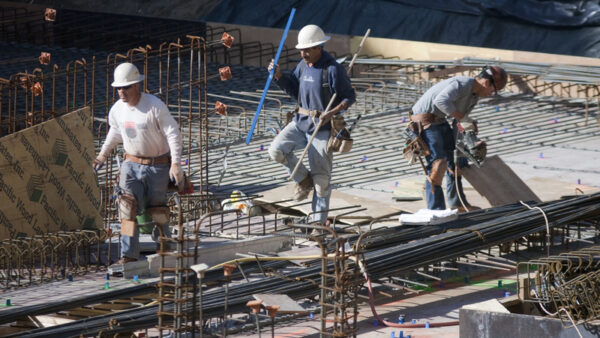One job in six in California’s construction industry is illegal, according to a study by Los Angeles-based think tank the Economic Roundtable.
It found that more than 143,900 jobs in the state’s $152bn construction sector were part of the black economy. In some trades, such as drylining, the ratio was one in four.
The report examined labour force statistics over a 40-year period and found that the number of illegal workers had risen fivefold since 1972. It said a big jump occurred after the 2008 crash. By 2012, regular employment had risen to 66% of its previous level, whereas informal jobs fully recovered as early as 2009.
Immigrant workers make up 43% of the Californian construction industry, and are thought to comprise most of the informal sector. Informal workers, who have few employment or social rights, make about half as much money as a worker in legitimate employment.
Yvonne Yen Liu, the lead author of the report, said: “Construction once provided livelihoods for many workers to live the Californian Dream. That dream has unfortunately turned into a nightmare as informality increases and many are pushed into contingent work. Construction is a low-road model of an industry sinking underground.”
Altogether, the study found that 104,100 jobs were unreported by employers and more than 39,000 employees were misclassified as independent contractors. Liu commented that the practice of bogus self-employment was spreading from construction to other industries.
“Misclassification was something that started in construction, but is something we’re now seeing in the so-called ‘sharing economy’,” she said.
The report calculated that if the wages of informal construction workers were raised to the level of formal workers, California would benefit from $1.5bn in economic stimulus.
The growth of informal employment has been enabled by poor employment protection in the formal sector. The report said that between 1968 and 2012, one in five construction workers was unemployed. Between 1988 and 2013, half of those unemployed lost their jobs involuntarily.
Informal construction also contributes to what the report called the “hollowing out” of the middle class. Thirty per cent of households with an income earner working informally in construction did not make enough to lift them above the poverty line. Households supported by an informal construction worker were three times more likely to live in poverty than households supported by a formal construction worker.
Specialist trades such as drywall had the highest level of informality, with more than 25% employed informally in 2012. Building construction was next, with 20% estimated to be informal. Little evidence of informality was found in heavy and civil engineering.
David Kersh, director of labour watchdog the Carpenters/Contractors Co-operation Committee, said informal employment was rife throughout the construction sector, including large-scale private and public projects.
“We come across these types of unlawful business practices at schools, colleges, universities, libraries, airports and other government facilities,” he said. “They involve regional and international contractors and developers, and companies employing from dozens up to 200 workers on a single project.”






